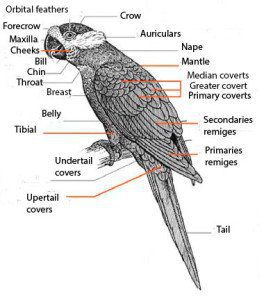Content |
|---|
Description
33-39 cm.. height and weight around the 450 and 550 g..
The Blue fronted Parrot (Amazona aestiva) is distinguished by yellow head, with blue-green forehead and cheek, Dark nostrils, Red shoulders outlined with yellow, wing with red patch and dark blue ends. Rest of the usually green body, more clear towards the belly and tail.
- The subspecies Amazona aestiva xanthopteryx of Bolivia, has more extensive yellow face and the shoulder is mostly yellow with a small red patch.
-
The subspecies A. to. xanthopteryx (Yellow wing Amazon): Wing coverts of the shoulder area almost exclusively yellow and, in general, creating a stain of greater extension. – From the southwest of Mato Grosso, Brazil, North and East of Bolivia, Paraguay and northern Argentina

In young coloration is generally more off. The blue and yellow practically do not exist and the iris is dark
- Sound of the Amazona aestiva.
Habitat:
Video – "Blue fronted Parrot" |
|---|
Lives in humid forests, Savanna, gallery forest, areas planted with trees and forest with palms, up to 1600m.
Common in pairs or flocks, they have many individuals community roosts.
In this species the sex of the specimens is not distinguished at a glance.
Reproduction:
It nests in holes in large trees.
Breeds between October and March.
The implementation is usually of 3 eggs, and incubation lasts approximately 25 days. Chicks leave the nest to the 60 days.
Food:
Its food consists of fruit, berries, nuts, leaves and seeds.
Distribution:
Interior of South America, from the North-East of Brazil, East of Bolivia, Paraguay, to the North of Argentina.
Conservation:
Not considered under any threat category globally.
State of conservation ⓘ Minor Concern ⓘ
(UICN)ⓘ
Minor Concern ⓘ
(UICN)ⓘ
|
|---|
Protected by the Convention CITES, consisting in annex II (species that may be threatened by a trade out of control).
It is a fairly widespread species in their area of distribution and is considered to have a stable population. However, numbers are declining rapidly in some areas due to capture for trade (both legal and illegal), and to other problems such as the destruction of their habitat and human pressure. Another problem affecting the species is that the average age of populations that exist in freedom is not known.
Blue fronted Parrot in captivity:
He is very smart, curious and loving. They are very sociable and gets along very well with children.
It is one of the best imitators that exist within the group psittacine after grays.
With its strong beak, as any Parrot, She likes chewing everything that gets you ahead. So, newcomer to our home, It is necessary to pay close attention.
It has a social behaviour so it is important to look for a partner. A large aviary and the possibility of going out every day are necessary.
If it feels threatened, It opens its wings between loud cries and wild-eyed.
Water love it. Released, When it rains, enjoy, in the rain, with open wings. The ideal humidity for a Blue fronted Parrot is of the 60-70%, which is impossible in an apartment during the winters in the heat of radiators. It is therefore necessary the use of humidifiers.
The staple food is made up of different types of nuts, sunflower seeds, pumpkin seeds, corn, wheat, etc. Important for a healthy diet are fruits and vegetables. These must be offered fresh every day.
Just before the breeding season, our birds must be provided with foods rich in calcium and protein, for example egg cooked.
Multivitamin supplements complete proper nutrition.
The female lays two to five eggs that incubate for an approximate period of 25 to 28 days.
Alternative names:
– Blue fronted Parrot, Blue-fronted Amazon, Blue-fronted Parrot, Turquoise-fronted Amazon, Turquoise-fronted Parrot (English).
– Amazone à front bleu (French).
– Blaustirnamazone, Rotbugamazone (German).
– Papagaio-verdadeiro, papagaio-colareiro, papagaio-comum, papagaio-curau (Portuguese).
– Amazona Frentiazul, Amazona Sudamericana, Loro hablador, Lora frente azul (español).
scientific classification:
– Order: Psittaciformes
– Family: Psittacidae
– Genus: Amazona
– Scientific name: Amazona aestiva
– Citation: (Linnaeus, 1758)
– Protonimo: Psittacus aestivus
Sources:
– Parrot Book, Parrots and macaws Neotropical
– avibase
– SEO.org
– Photo: birdnest
– Sounds: Diego Caiafa

